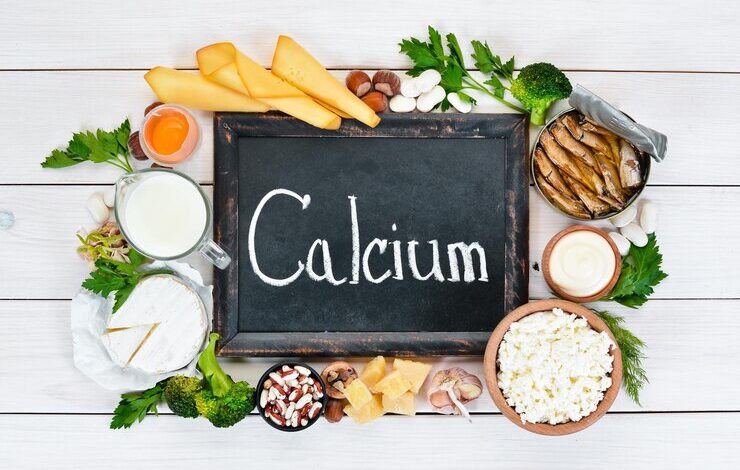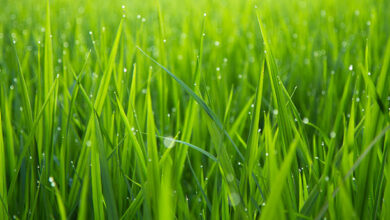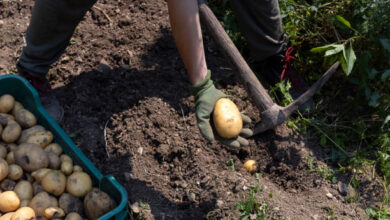WHAT DOES CALCIUM DO FOR PLANTS

WHAT DOES CALCIUM DO FOR PLANTS
sunshine and water are crucial, but there’s another essential nutrient that often goes unnoticed: calcium. Just like it strengthens our bones, calcium plays a mighty role in plant health and development.
Building Strong and Sturdy Plants
Imagine calcium as the tiny bricks that form the walls of your plant’s cells. These cell walls, rich in calcium pectate, provide structure and rigidity. Strong cell walls are essential for several reasons:
- Withstanding the Elements: They act like a suit of armor, protecting plants from wind, rain, and even hail damage.
- Keeping Pests at Bay: Sturdy cell walls make it harder for insects and diseases to invade your precious plants.
- Supporting Growth: They allow plants to stand tall and support the weight of leaves, flowers, and fruits.
BEYOND THE WALLS: THE DIVERSE BENEFITS OF CALCIUM
Calcium’s role in plant health goes far beyond simply building strong cell walls. It acts like a multi-talented assistant, playing a crucial part in various processes that keep your plants thriving. Here’s a deeper dive into the diverse benefits of calcium:
- Stress Tolerance: Calcium acts as a natural stress reliever for plants. It helps them cope with environmental challenges like drought, high temperatures, and even salt stress. By stabilizing cell membranes and regulating water balance, calcium allows plants to maintain their health under less-than-ideal conditions.
- Improved Fruit Quality and Shelf Life: Adequate calcium levels contribute to the firmness and overall quality of fruits. It helps prevent disorders like blossom end rot in tomatoes and peppers, where the lack of calcium disrupts cell development at the blossom end. Additionally, calcium can improve the shelf life of fruits by strengthening cell walls and reducing post-harvest spoilage.
- Enhanced Disease Resistance: Strong cell walls, fortified by calcium, act as the first line of defense against invading pathogens. Calcium also plays a role in activating plant defense mechanisms, helping them fight off fungal and bacterial diseases.
- Improved Nutrient Uptake: Calcium interacts with other essential nutrients like potassium and magnesium, facilitating their uptake and utilization within the plant. This ensures plants have a balanced supply of nutrients for optimal growth and development.
The Calcium-Enzyme Connection:
Calcium doesn’t work alone. It acts as a crucial activator for numerous enzymes, which are the workhorses of plant metabolism. These enzymes are responsible for various functions, including:
- Photosynthesis: Calcium is involved in activating enzymes essential for capturing sunlight energy and converting it into usable sugars.
- Nitrogen Fixation: In legumes like peas and beans, calcium is necessary for the enzymes that fix atmospheric nitrogen, making it available for plant growth.
- Nutrient Translocation: The movement of nutrients within the plant is facilitated by enzymes that require calcium for proper functioning.
By ensuring adequate calcium levels, you’re not just providing a building block for cell walls; you’re supporting a cascade of vital processes that keep your plants healthy and productive.
SIGNS YOUR PLANT NEEDS A CALCIUM BOOST
Calcium deficiencies can be tricky to diagnose because symptoms often mimic other problems. However, by keeping a watchful eye on your plants, you can identify the telltale signs of a calcium shortage and take corrective action before it’s too late. Here’s a breakdown of the key indicators to look out for:
New Growth Issues:
- Distorted Leaves: New leaves may appear curled, cupped, or develop an unusual puckered texture. This is caused by uneven cell growth due to a lack of calcium.
- Stunted Growth: Overall plant growth may be slow and stunted. New leaves and stems may appear underdeveloped compared to healthy plants.
- Leaf Discoloration: In some cases, calcium deficiency can manifest as yellowing or browning around the edges of young leaves. This discolored area might progress inwards as the deficiency worsens.
Stem and Tissue Weakness:
- Weak Stems: Plants suffering from calcium deficiency often have weak, flimsy stems that struggle to support their weight. This can lead to leggy growth and a tendency to droop or fall over.
- Cracking Stems: In severe cases, the lack of calcium can cause the stems to become brittle and prone to cracking, especially at the nodes (points where leaves connect to the stem).
- Blossom End Rot: This common issue in fruits like tomatoes, peppers, and eggplants is a classic sign of calcium deficiency. It appears as a sunken, discolored, and often leathery patch at the blossom end of the fruit, opposite the stem.
Beyond the Obvious:
- Reduced Flower and Fruit Set: While blossom end rot is a clear sign, even in its absence, calcium deficiency can negatively impact flower and fruit production. Plants may struggle to set flowers or produce fewer and smaller fruits with lower quality.
- Slower Recovery from Damage: Plants with inadequate calcium levels might have a harder time recovering from physical damage caused by insects, hail, or strong winds. This is because strong cell walls are crucial for wound healing and overall plant resilience.
Remember: It’s important to consider all factors before diagnosing a calcium deficiency. Rule out other potential causes like pests, diseases, or watering issues before attributing the symptoms solely to a lack of calcium. If you suspect a deficiency, a soil test can confirm your suspicions and help determine the best course of action.
ENSURING YOUR PLANTS HAVE ENOUGH CALCIUM
Now that you understand the importance of calcium for plants, how do you ensure they get enough? Here are some tips:
- Maintain Healthy Soil: Calcium is a key component of good soil structure and nutrient availability. Regularly adding organic matter like compost and using calcium-rich amendments like crushed eggshells can help.
- Choose the Right Plants: Some plants, like tomatoes, peppers, and leafy greens, have higher calcium requirements. Research the specific needs of your plants to ensure they get the calcium they crave.
Conclusion: The Power of Calcium in Your Garden
By understanding what calcium does for plants and taking steps to ensure they have sufficient levels, you’re setting your garden up for success. From strong cell walls to healthy roots and improved fruit quality, calcium is the unsung hero working behind the scenes to keep your plants thriving. So, the next time you’re tending to your garden, remember the power of this essential nutrient!
Call to Action: Test your soil to determine its calcium content and research the specific calcium needs of your favorite plants. With a little planning, you can ensure your garden flourishes with the power of calcium!
TRENDING FAQS: WHAT DOES CALCIUM DO FOR PLANTS?
- Is calcium deficiency common in houseplants?
Yes, calcium deficiency can occur in houseplants, especially if they are not repotted regularly or the potting mix lacks essential nutrients. Signs to watch for include stunted growth, distorted new leaves, and weak stems.
- Can I add calcium directly to my plants through foliar feeding?
While foliar feeding with calcium solutions can be a temporary solution, it’s not the most effective long-term strategy. For best results, focus on improving the overall calcium content in your soil through methods like adding organic matter or using calcium-rich amendments.
- Do eggshells really help with calcium deficiency in plants?
Eggshells are a natural source of calcium, but they release nutrients slowly. Crushing them finely and adding them to your soil can be a helpful strategy, but it’s best combined with other methods like compost or commercial calcium supplements for faster results.
- My tomatoes have blossom end rot. Is that a sign of calcium deficiency?
Blossom end rot is a classic symptom of calcium deficiency in tomatoes and other fruiting vegetables. It appears as a sunken, discolored area at the blossom end of the fruit. Ensuring adequate calcium levels in the soil throughout the growing season can help prevent this issue.
- How often should I test my soil for calcium levels?
Soil testing recommendations can vary depending on your soil type and gardening practices. Generally, testing every 2-3 years is a good starting point. However, if you suspect a persistent calcium deficiency, more frequent testing might be necessary.
READ ALSO: WHAT IS THE STRONGEST ANIMAL?




